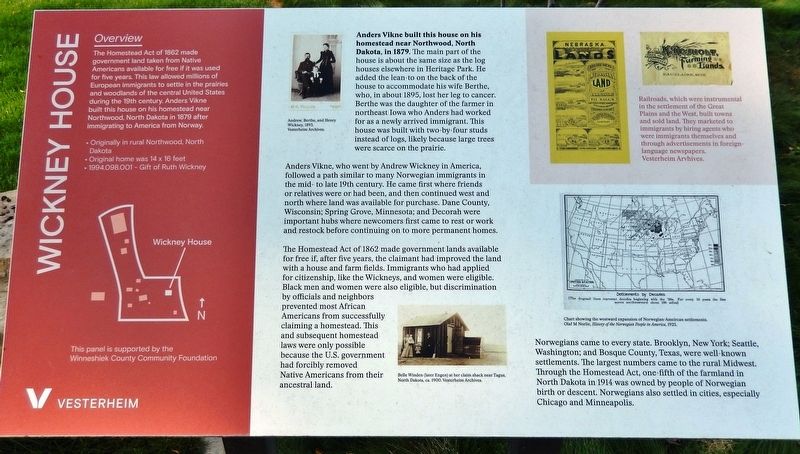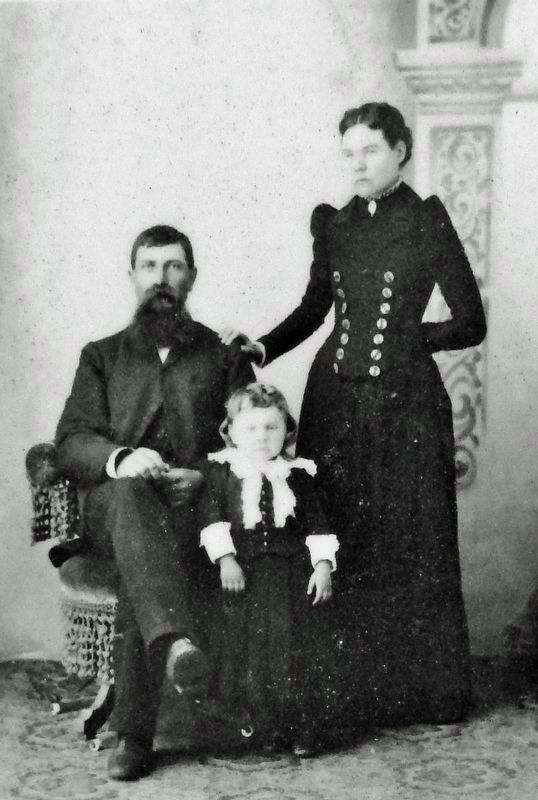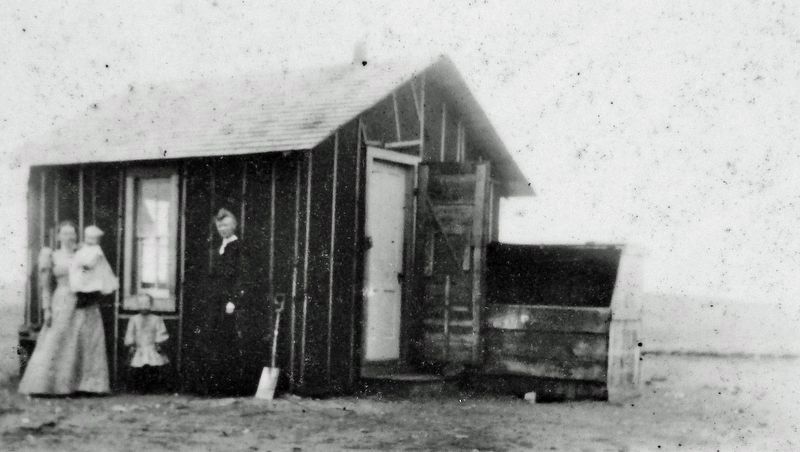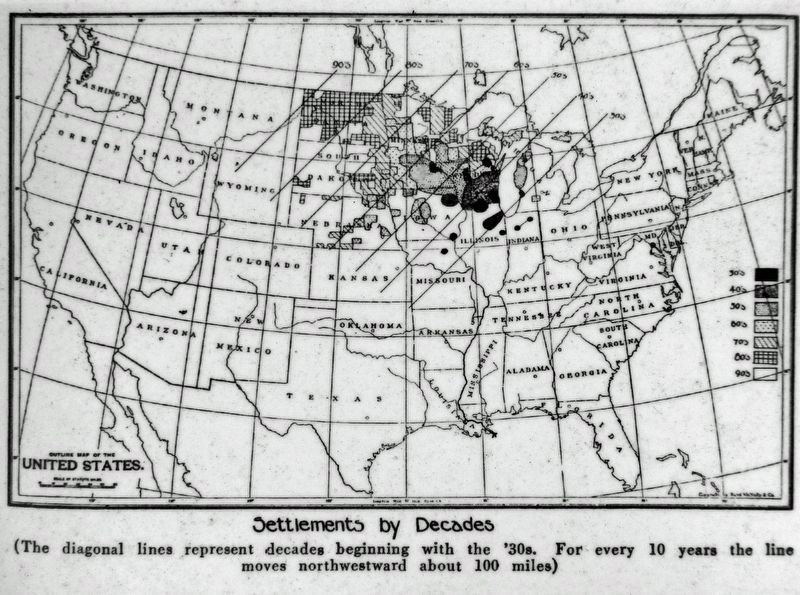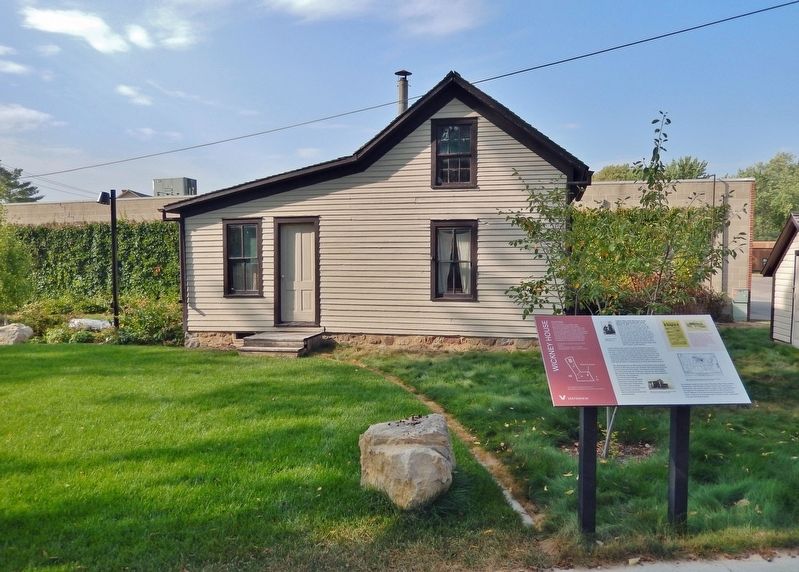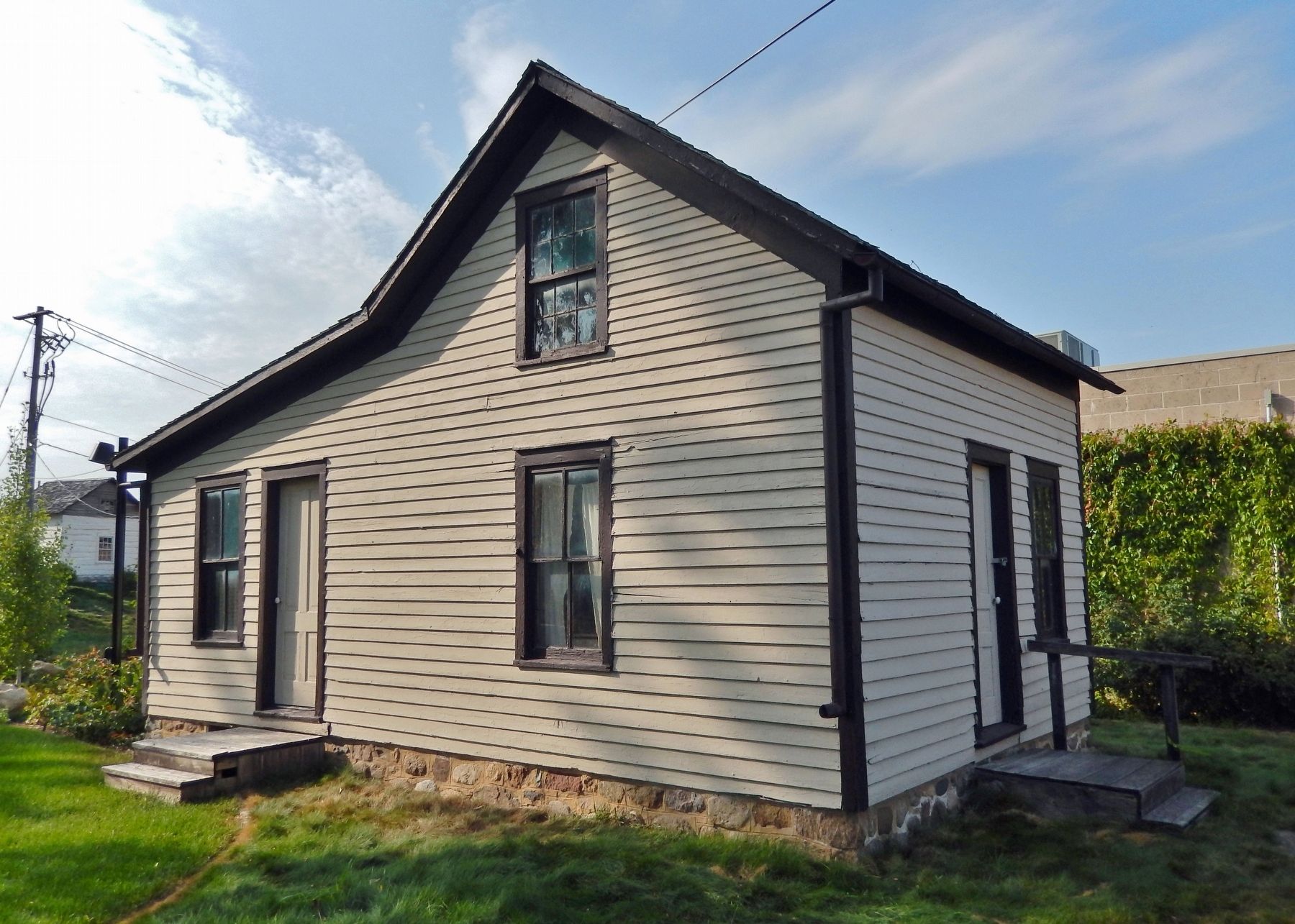Decorah in Winneshiek County, Iowa — The American Midwest (Upper Plains)
Wickney House
Heritage Park, Vesterheim Norwegian-American Museum
Overview
The Homestead Act of 1862 made government land taken from Native Americans available for free if it was used for five years. This law allowed millions of European immigrants to settle in the prairies and woodlands of the central United States during the 19th century. Anders Vikne built this house on his homestead near Northwood, North Dakota in 1879 after immigrating to America from Norway.
• Originally in rural Northwood, North Dakota
• Original home was 14 x 16 feet
• 1994.098.001 — Gift of Ruth Wickney.
Anders Vikne built this house on his homestead near Northwood, North Dakota, in 1879. The main part of the house is about the same size as the log houses elsewhere in Heritage Park. He added the lean-to on the back of the house to accommodate his wife Berthe, who, in about 1895, lost her leg to cancer. Berthe was the daughter of the farmer in northeast Iowa who Anders had worked for as a newly arrived immigrant. This house was built with two-by-four studs instead of logs, likely because large trees were scarce on the prairie.
Anders Vikne, who went by Andrew Wickney in America, followed a path similar to many Norwegian immigrants in the mid- to late 19th century. He came first where friends or relatives were or had been, and then continued west and north where land was available for purchase. Dane County, Wisconsin; Spring Grove, Minnesota; and Decorah were important hubs where newcomers first came to rest or work and restock before continuing on to more permanent homes.
The Homestead Act of 1862 made government lands available for free if, after five years, the claimant had improved the land with a house and farm fields. Immigrants who had applied for citizenship, like the Wickneys, and women were eligible. Black men and women were also eligible, but discrimination by officials and neighbors prevented most African Americans from successfully claiming a homestead. This and subsequent homestead laws were only possible because the U.S. government had forcibly removed Native Americans from their ancestral land.
Railroads, which were instrumental in the settlement of the Great Plains and the West, built towns and sold land. They marketed to immigrants by hiring agents who were immigrants themselves and through advertisements in foreign-language newspapers.
Norwegians came to every state. Brooklyn, New York; Seattle, Washington; and Bosque County, Texas, were well-known settlements. The largest numbers came to the rural Midwest. Through the Homestead Act, one-fifth of the farmland in North Dakota in 1914 was owned by people of Norwegian birth or descent. Norwegians also settled in cities, especially Chicago and Minneapolis.
Erected by Vesterheim Norwegian-American Museum.
Topics. This historical marker is listed in these topic lists: Architecture • Immigration • Railroads & Streetcars • Settlements & Settlers. A significant historical year for this entry is 1879.
Location. 43° 18.29′ N, 91° 47.478′ W. Marker is in Decorah, Iowa, in Winneshiek County. Marker can be reached from North Mechanic Street just north of West Day Spring Lane, on the left when traveling north. The marker is located in Vesterheim Norwegian-American Museum Heritage Park. Touch for map. Marker is at or near this postal address: 520 West Water Street, Decorah IA 52101, United States of America. Touch for directions.
Other nearby markers. At least 8 other markers are within walking distance of this marker. Tasa Drying Shed (a few steps from this marker); Norsvin Mill (within shouting distance of this marker); Valders House (within shouting distance of this marker); Stabbur (within shouting distance of this marker); Egge-Koren House (within shouting distance of this marker); Haugan House (within shouting distance of this marker); Vesterheim (within shouting distance of this marker); Rovang Schoolhouse (within shouting distance of this marker). Touch for a list and map of all markers in Decorah.
Related markers. Click here for a list of markers that are related to this marker. Vesterheim Norwegian-American Museum Heritage Park
Also see . . .
Wickney House. (Includes link to a virtual tour of the interior.) Excerpt:
Rural Northwood, North Dakota (1879). Anders Vikne (Wickney) built the original 14-by-16-foot section of this house in 1879 on his homestead near Northwood, North Dakota. He returned to Allamakee County in Iowa to marry Berthe Hagen, the daughter of the farmer he worked for as an immigrant lad. The resemblance to the building tradition shared with the Egge-Koren and Haugan houses is obscured by the lean-to addition built about 1890. The balloon-frame structure, or two-by-four, construction was an innovation, doubtless owing to the scarcity of timber on the prairie. The choice to build a home of these modest dimensions was likely influenced as much by cultural expectations as by the cost and availability of building materials on the frontier.(Submitted on November 23, 2023, by Cosmos Mariner of Cape Canaveral, Florida.)
Credits. This page was last revised on November 24, 2023. It was originally submitted on November 23, 2023, by Cosmos Mariner of Cape Canaveral, Florida. This page has been viewed 58 times since then and 11 times this year. Photos: 1, 2, 3, 4, 5, 6. submitted on November 23, 2023, by Cosmos Mariner of Cape Canaveral, Florida.
